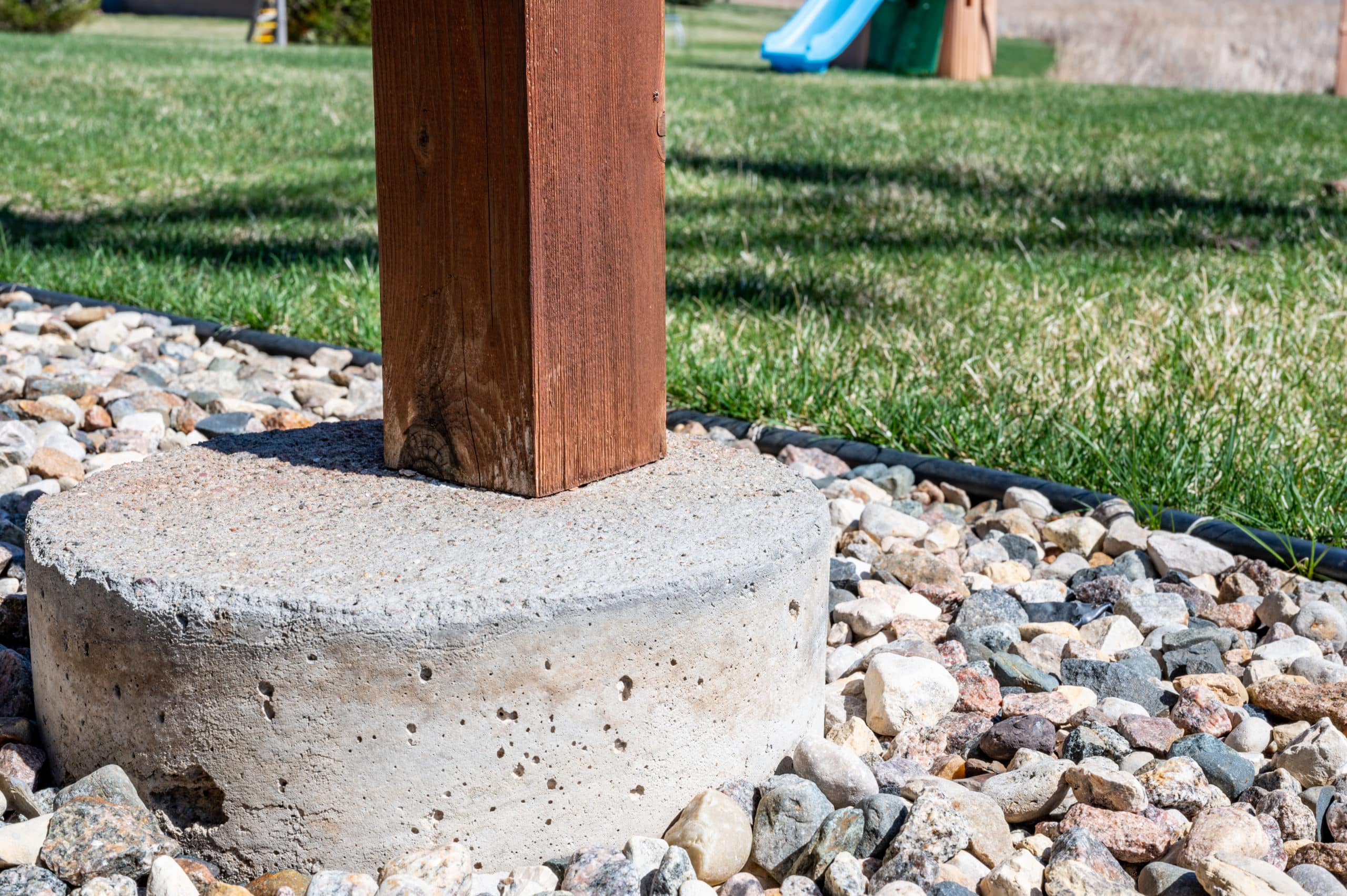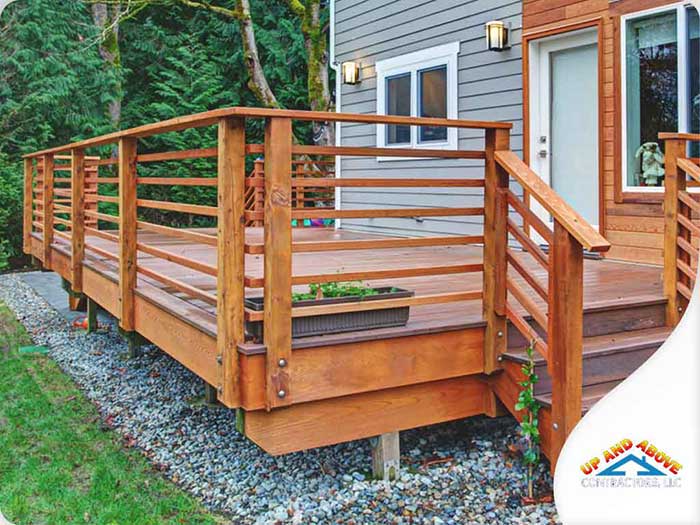A Solid Foundation for Your Oasis: Checking Out the Importance of Deck Footings in Outdoor Structures
Picking the Right Deck Footings for Security and Sturdiness
The long life and safety of your deck depend greatly on the kind of footings you choose, as they offer the important assistance and stability to stand up to the examination of time. In this discussion, we will certainly discover the different kinds of deck grounds, think about the essential aspects to weigh when making a choice, and delve into the pros and disadvantages of various options.
Kinds Of Deck Grounds
These footings consist of a cylindrical hole filled with concrete, which provides a solid foundation for the deck posts. Concrete pier footings are relatively easy to install and use superb security, making them a popular choice for many deck jobs.
These grounds are set up by screwing them into the ground, which develops a safe and secure structure for the deck. They also allow for very easy modification and leveling of the deck if required.
Additionally, some home builders choose precast concrete grounds. These grounds are made of sturdy concrete and can be found in different sizes and shapes to suit different deck designs. Precast concrete footings are convenient to set up and provide a secure base for the deck structure.
Ultimately, one more alternative is the post-in-anchor footing system. This kind of footing entails driving a metal support right into the ground and attaching it to the deck blog post. It provides flexibility in regards to positioning the deck blog posts and appropriates for decks with lightweight frameworks.
When selecting the right kind of deck ground, it is vital to consider variables such as soil conditions, deck lots, and regional building regulations (Deck Footings). Consulting with an expert contractor or structural engineer can assist ensure the proper ground is chosen for a stable and risk-free deck
Variables to Consider When Picking Footings
When selecting the appropriate footings for a deck, it is critical to thoroughly take into consideration numerous elements such as dirt conditions, deck lots, and adherence to local building ordinance. These elements play a substantial duty in guaranteeing the stability and longevity of the deck structure.
The type of soil on which the deck will be developed determines the kind of footings required. On the other hand, decks constructed on clay or large dirts might require footings that can fit the dirt's tendency to expand and contract.
An additional important element is the deck lots. The weight of the deck, consisting of the materials utilized and any kind of potential real-time tons such as furnishings or gatherings, need to be taken into consideration when selecting footings. The grounds have to be made to birth the weight of the deck and disperse it equally to stop any type of structural concerns or failures.
Last but not least, adherence to neighborhood structure codes is extremely important. Structure codes vary from area to region, and it is necessary to abide by the details needs established by the local authorities. Deck Footings. These codes make sure that the deck is developed securely and satisfies the necessary requirements for structural stability and load-bearing capacity
Concrete Grounds: Benefits And Drawbacks

Concrete grounds provide numerous advantages and drawbacks when made use of as the foundation for a deck. On the favorable side, concrete footings give exceptional stability and longevity. Concrete is a strong and rigid product that can support heavy lots and withstand various climate conditions. It additionally has a lengthy life expectancy, making it a dependable selection for long-lasting use.
One more benefit of concrete grounds is their versatility. They can be poured into different forms you could try these out and dimensions to suit numerous deck designs and configurations. Concrete footings can be customized to fit the particular needs and requirements of the deck framework.
Nonetheless, there are additionally some downsides to utilizing concrete footings. One major disadvantage is the cost and labor entailed in their installment. Concrete grounds need excavation and usually require the aid of heavy equipment. This can increase the general expense of the deck task and may require expert help.

Helical Piers Vs. Sonotubes: Which Is Much better?
In considering the structure alternatives for a deck, the comparison in between helical piers and sonotubes is vital in identifying the remarkable option. Helical piers, also known as screw stacks, are steel shafts with helical plates attached to them. They are twisted right into the ground utilizing hydraulic equipment, offering a durable and stable structure for the deck. On the other hand, sonotubes are round types made from cardboard or fiber product that are loaded with concrete. They are put in an opening went into the ground more info here and supply support for the deck.
When it involves security and durability, helical piers have the top hand. The helical plates on the piers develop a strong grasp with the dirt, protecting against any kind of movement or changing of the deck. This is particularly useful in areas with unpredictable or moving soil problems. Sonotubes, on the other hand, count entirely on the concrete filling for security, which may not supply the exact same degree of stamina and resistance.
In regards to installation, helical piers are fairly easier and faster to set up contrasted to sonotubes. The hydraulic machinery made use of to twist the piers right into the ground ensures a effective and fast process. Sonotubes, on the various other hand, need digging openings and pouring concrete, which can be labor-intensive and taxing.
Additionally, helical piers are an even more flexible dig this alternative. They can be utilized in different soil problems and can be readjusted or strengthened if needed. Sonotubes, on the various other hand, may call for extra assistance, such as rebar, in certain dirt conditions or areas with high load demands.
Choosing the Right Footings for Your Deck's Dimensions
For ideal structural honesty, it is vital to very carefully choose the suitable footings that align with the measurements of your deck. The dimensions of your deck, including its size, elevation, and size, play a substantial role in figuring out the kind and dimension of grounds called for.
When choosing grounds for your deck, it is essential to consider the load-bearing capacity of the dirt. The weight of the deck, combined with the weight of any type of furnishings or people on it, puts in a substantial force on the grounds (Deck Footings). As a result, it is essential to pick footings that can properly sustain this weight without sinking or changing over time.
Larger decks with better dimensions need larger grounds to supply adequate stability and assistance. The form of the grounds, whether they are square or rounded, depends on the style and layout of the deck.
Conclusion
In final thought, choosing the ideal deck grounds is crucial for making sure security and durability. Elements such as the kind of grounds, the deck's measurements, and the pros and disadvantages of various options ought to be thought about.
These grounds are composed of a cylindrical opening filled with concrete, which supplies a strong structure for the deck articles. Concrete pier footings are fairly simple to install and use superb security, making them a preferred selection for many deck projects.
Precast concrete footings are convenient to mount and provide a stable base for the deck structure.
It offers flexibility in terms of positioning the deck posts and is suitable for decks with light-weight frameworks.
Concrete footings provide several advantages and drawbacks when used as the foundation for a deck.